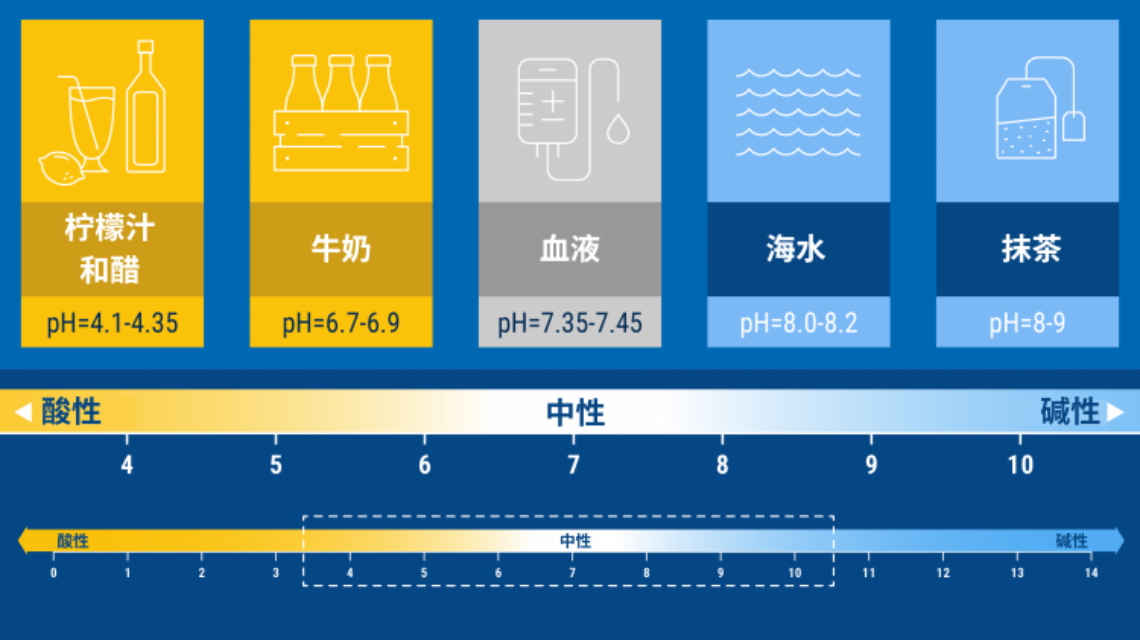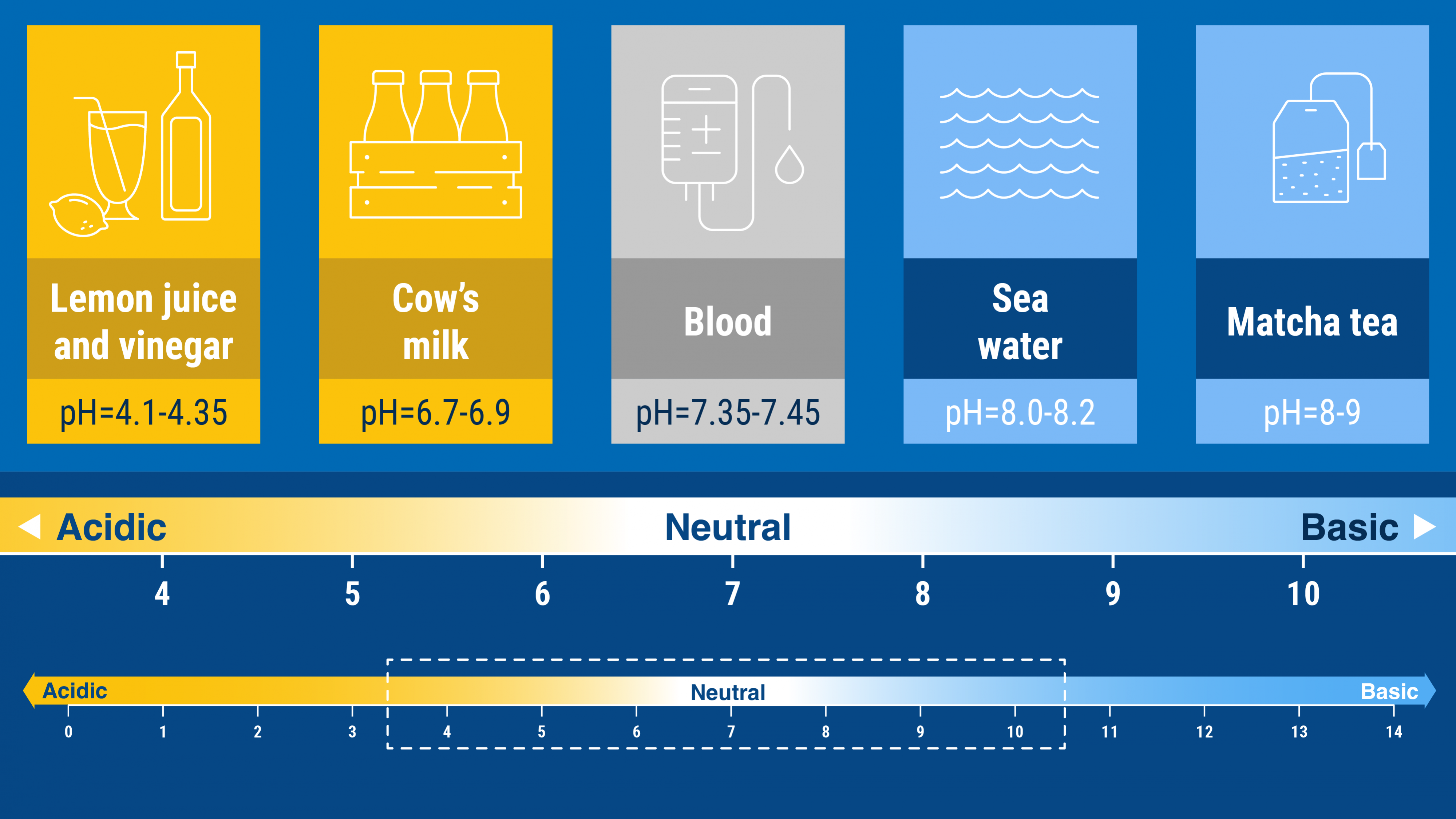海洋不仅为超过30亿人口提供着其赖以生存的资源,还供给了我们呼吸所需的大部分氧气,并吸收着温室气体,减轻其在大气中的影响。海洋在地球的气候和天气系统以及全球碳循环中发挥着关键作用,是一种不可估量的自然力量。然而,人类活动已经从根本上改变了海洋的化学组成。自20世纪80年代末以来,95%公海表层水的酸性有所增加。海洋吸收约30%人类活动产生的二氧化碳,导致海水pH值下降,这个过程被称为海洋酸化。随着大气中的二氧化碳水平超过工业化前的50%,这个问题正变得愈加严重。
什么是海洋酸化?
海洋不仅为超过30亿人口提供着其赖以生存的资源,还供给了我们呼吸所需的大部分氧气,并吸收着温室气体,减轻其在大气中的影响。海洋在地球的气候和天气系统以及全球碳循环中发挥着关键作用,是一种不可估量的自然力量。
什么是pH值和酸度?
pH值是对溶液酸碱度的衡量。溶液的pH值代表氢离子(H+)浓度指数,通常为0至14。纯水的pH值为7,呈中性,既非酸性也非碱性,H+和OH-的浓度相等。pH值低于7的溶液呈酸性,而pH值大于7的溶液呈碱性。pH值按对数计算,所以减少一个pH值单位,酸度就会增加10倍。
海洋是微碱性的。在18至19世纪工业革命前,海洋的平均pH值约为8.2。如今,海洋的平均pH值为8.1,比工业化前降低了0.1个单位。根据政府间气候变化专门委员会(IPCC)的第六次评估报告,到2100年,海洋的pH值可能会下降到7.8左右,这将影响到半成的海洋生物。
海洋酸化威胁着海洋生态系统,也会影响到依靠海洋作为收入和饮食来源的人群,而这样以多种多样海洋和沿海生物为生的人口超过30亿。
对于海洋生态系统来说,海洋酸化带来了双重挑战:酸度升高和碳酸根离子(CO32-)的可用性降低。钙质生物——如牡蛎、螃蟹、海胆、龙虾和珊瑚——需要CO32-来建造和维持它们的外壳和骨架。此外,研究表明,随着pH值的降低,海洋生物外壳和骨架可能更容易溶解。科学家们正在研究钙化生物受酸化影响的程度,以及为什么有些生物可能比其他生物更敏感。
海洋生物为克服酸性条件而消耗的能量可能会减少其生殖和生长等生理过程中的可用能量,威胁食物链的稳定性,从而影响生态系统的复原力,以及渔业和旅游业等经济活动。
- 原子能机构支持世界各国利用核技术和核衍生技术以加深对海洋变化的科学理解。原子能机构海洋环境实验室的科学家们正在利用同位素技术研究海洋酸化的影响及其与其他环境压力因素的相互作用。
- 原子能机构于2012年成立了海洋酸化国际协调中心(OA-ICC),重点关注海洋酸化现状和趋势的相关科学、能力建设、推广和交流,促进以科学为基础的决策制定。
- 海洋酸化国际协调中心支持了2013年启动的全球海洋酸化观测网络(GOA-ON)。全球海洋酸化观测网络数据门户提供了海洋酸化监测设施的信息,包括实时数据的获取。这个网络由九个区域中心组成,包括亚洲(太平洋岛屿和领土)、南亚和西太平洋的三个中心。
- 全球海洋酸化观测网络还管理着一个专门的开放获取网站,提供源源不断的科学报告、媒体报道、政策简报和其他与海洋酸化相关的材料。

What is pH and acidity?
pH is the measure of the acidity or basicity of a liquid solution. A solution’s pH represents the concentration of hydrogen ions (H+) and hydroxyl ions (OH-) on a scale of 0 to 14. Pure water has a pH of 7 and is neutral – neither acidic nor basic – with equal concentrations of H+ and OH−. A solution with a pH lower than 7 is acidic, while a solution with a pH greater than 7 is basic. The pH scale is logarithmic, so a decrease of one pH unit is a ten-fold increase in acidity.
The ocean is slightly basic. Prior to the Industrial Revolution of the 18th to 19th centuries, the ocean’s average pH was about 8.2. Today, the ocean’s average pH is 8.1. This means that the ocean today is about 30 per cent more acidic than in pre-industrial times. By 2100, the pH of the ocean could decrease to about 7.8, making the ocean 150 percent more acidic and affecting half of all marine life, according to the Intergovernmental Panel on Climate Change (IPCC) Sixth Assessment Report.
What is the effect of a more acidic ocean?
Ocean acidification threatens marine ecosystems, which also affects populations who rely on the ocean as a source of income and diet. Over three billion people depend on marine and coastal biodiversity for their livelihoods.
For marine ecosystems, ocean acidification presents a two-fold challenge: higher acidity and lower availability of carbonate ions (CO32-). Calcifying organisms – such as oysters, crabs, sea urchins, lobsters and coral – need CO32- to build and maintain their shells and skeletons. Furthermore, studies suggest marine shells and skeletons may dissolve more easily as pH decreases. Scientists are studying the extent to which calcifying organisms are affected by acidification and how some organisms may be more sensitive than others.
Energy spent by marine organisms overcoming more acidic conditions may reduce the energy available for physiological processes, such as reproduction and growth, threatening the stability of food chains that would affect the ecosystem resilience and economic activities, such as fisheries and tourism.
What is the role of the IAEA?
- The IAEA supports countries around the world in utilizing nuclear and nuclear-derived techniques to develop a science-based understanding of changes in the ocean. Scientists at the IAEA’s Marine Environment Laboratories are using isotopic techniques to investigate the impacts of ocean acidification and its interaction with other environmental stressors.
- The IAEA established the Ocean Acidification International Coordination Centre (OA-ICC) in 2012 to focus on science, capacity building, outreach and communication about the status and trends of ocean acidification, promoting science-based decision making.
- The OA-ICC supported the launch of the Global Ocean Acidification Observing Network (GOA-ON) in 2013. The GOA-ON data portal provides information on ocean acidification monitoring facilities and includes access to real-time data.
- The OA-ICC also manages a dedicated, open-access website that offers a steady stream of scientific reports, media coverage, policy briefs and other material pertaining to ocean acidification.



